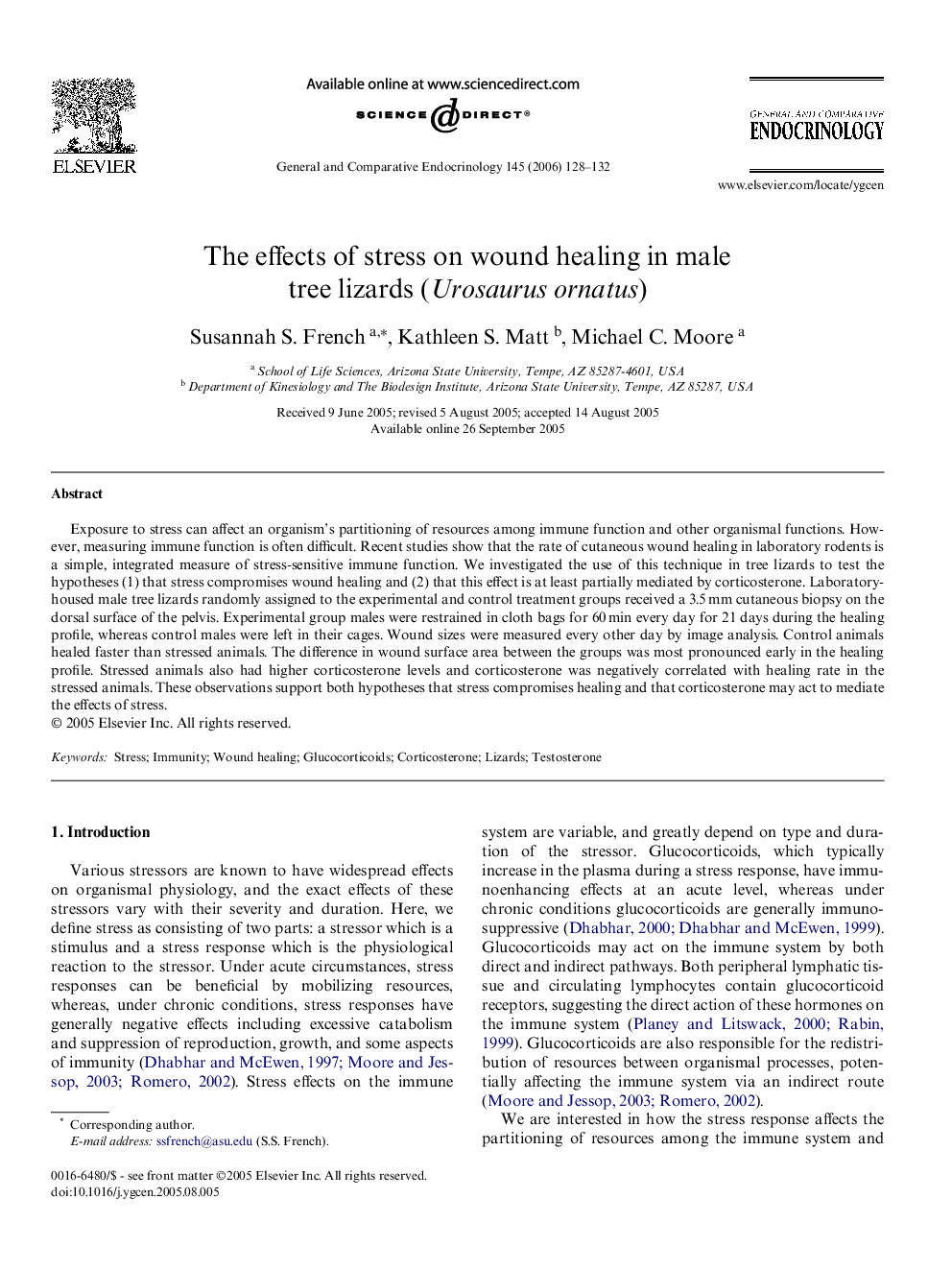| Article ID | Journal | Published Year | Pages | File Type |
|---|---|---|---|---|
| 2802238 | General and Comparative Endocrinology | 2006 | 5 Pages |
Exposure to stress can affect an organism’s partitioning of resources among immune function and other organismal functions. However, measuring immune function is often difficult. Recent studies show that the rate of cutaneous wound healing in laboratory rodents is a simple, integrated measure of stress-sensitive immune function. We investigated the use of this technique in tree lizards to test the hypotheses (1) that stress compromises wound healing and (2) that this effect is at least partially mediated by corticosterone. Laboratory-housed male tree lizards randomly assigned to the experimental and control treatment groups received a 3.5 mm cutaneous biopsy on the dorsal surface of the pelvis. Experimental group males were restrained in cloth bags for 60 min every day for 21 days during the healing profile, whereas control males were left in their cages. Wound sizes were measured every other day by image analysis. Control animals healed faster than stressed animals. The difference in wound surface area between the groups was most pronounced early in the healing profile. Stressed animals also had higher corticosterone levels and corticosterone was negatively correlated with healing rate in the stressed animals. These observations support both hypotheses that stress compromises healing and that corticosterone may act to mediate the effects of stress.
